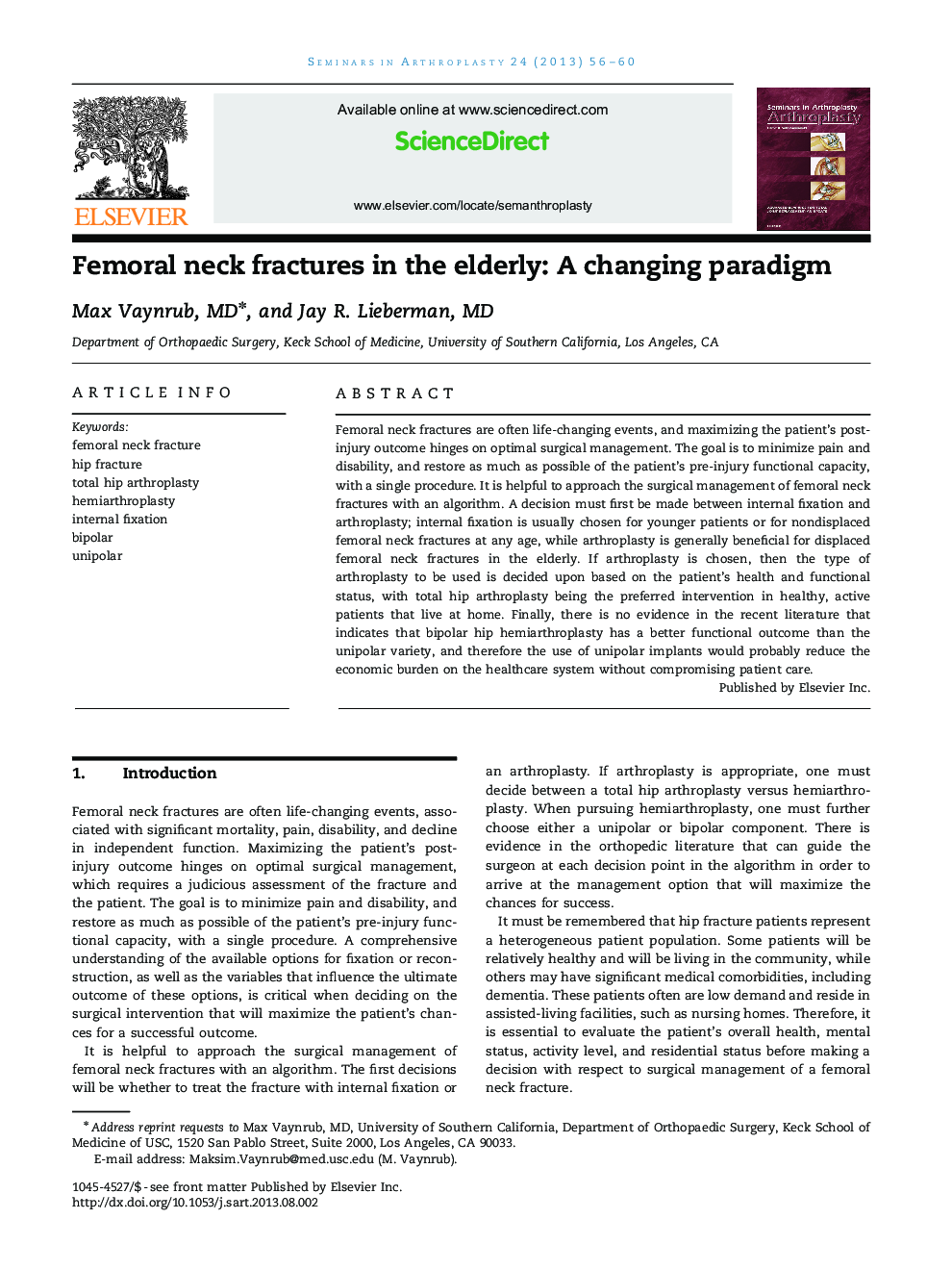| Article ID | Journal | Published Year | Pages | File Type |
|---|---|---|---|---|
| 4094087 | Seminars in Arthroplasty | 2013 | 5 Pages |
Femoral neck fractures are often life-changing events, and maximizing the patient’s post-injury outcome hinges on optimal surgical management. The goal is to minimize pain and disability, and restore as much as possible of the patient’s pre-injury functional capacity, with a single procedure. It is helpful to approach the surgical management of femoral neck fractures with an algorithm. A decision must first be made between internal fixation and arthroplasty; internal fixation is usually chosen for younger patients or for nondisplaced femoral neck fractures at any age, while arthroplasty is generally beneficial for displaced femoral neck fractures in the elderly. If arthroplasty is chosen, then the type of arthroplasty to be used is decided upon based on the patient’s health and functional status, with total hip arthroplasty being the preferred intervention in healthy, active patients that live at home. Finally, there is no evidence in the recent literature that indicates that bipolar hip hemiarthroplasty has a better functional outcome than the unipolar variety, and therefore the use of unipolar implants would probably reduce the economic burden on the healthcare system without compromising patient care.
